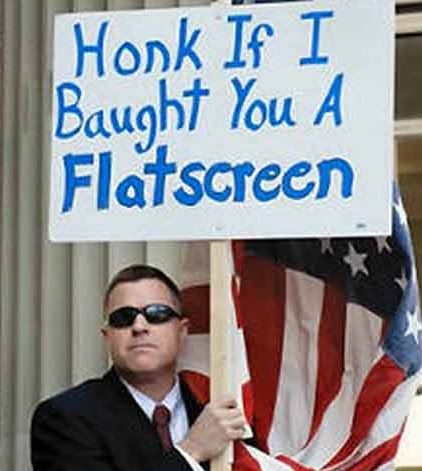I’m currently in the process of updating and printing a new portfolio and I thought I would take a moment half day to talk about the process.
My dear friend, Marc, has said of editing, “It’s like lining up your children and deciding which ones you’re going to shoot.” That quote isn’t going to end up on the front of a greeting card anytime soon but it does get to the heart of the matter. Andy Lee rephrased it to, “…deciding which ones you love more.” Either way, the process can suck but it is a process you need to go through on a regular basis. At least twice a year. Minimum.
-
-
Sebastian Liste – Urban Quilombo
Sebastian Liste Urban Quilombo ESSAY CONTAINS EXPLICIT CONTENT This work is a witness about a place that no longer exists. I lived there almost everything that one can live. I learned there the dar…
via burn magazine: https://www.burnmagazine.org/essays/2011/10/sebastian-liste-urban-quilombo/
Eight years ago sixty families occupied the “Galpao da Araujo Barreto”, an abandoned chocolate factory in Salvador de Bahia, Brazil. Before that, these families lived in the dangerous streets of the city until they decided to come together and occupy this factory in ruins and turn it in a home.
tagged Sebastian Liste -
tagged Florian Reischauer
-

Teabonics
Teabonics refers to spelling and grammatical errors associated with members of the Tea Party movement, particularly the picket signs displayed during various Tea Party demonstrations.
via Know Your Meme: http://knowyourmeme.com/memes/teabonics#.Tpgx7d0zJM4
Teabonics refers to spelling and grammatical errors associated with members of the Tea Party movement, particularly the picket signs displayed during various Tea Party demonstrations.
in Photography -
Imagine spending the time to take 36 perfectly spaced photographs and then later combining them into a fully scrollable 360-degree panoramic image. Now imaging doing the exact same thing, only instead of all that tedious work, you just toss a football-sized ball into the air.
in Equipment -
Firstly, it’s not from Leica, it’s from Ricoh. Secondly it has none of the cache or build quality of an M Leica. But, with that clear and behind us, the Ricoh GXR with A12 M Module (GXR-M from now on) represents a remarkable value for anyone looking for a home for their Leica M mount lenses who doesn’t have the $7K needed to buy an M9.
in Equipment -
Lucas Gilman On Nik’s Color Effex Pro
This is the debut of a new column where we talk to pros about their equipment and techniques. by Grayson Schaffer Last week, San Diego–based Nik Software released the fourth version of Color Effex …
via A Photo Editor: https://aphotoeditor.com/2011/10/10/lucas-gilman-on-niks-color-effex-pro/
Nik Software released the fourth version of Color Effex Pro, their popular Photoshop, Lightroom, and Aperture plugin. Like Photoshop actions, CEP4 allows photographers to quickly combine multiple small adjustments into different treatments or filters. But unlike actions, and even its own previous versions, CEP4 has a stand-alone user interface that makes adding and blending multiple enhancements fast, easy, and intuitive. We spoke with Denver-based adventure sports photographer Lucas Gilman, one of Nik’s beta testers on CEP4, to find out how it integrates into his workflow.
tagged Lucas Gilman -
Time is an investigation and photographic challenge to the time and the reality, taking the same space but different times. The final image ranges between document and performance.
tagged Leonardo Filipaz -
HARD ART DC 1979 is a forthcoming book and traveling exhibition of photographs by Lucian Perkins with writing by Alec MacKaye and a contribution by Henry Rollins.
tagged Lucian Perkinsin Punk Rock -
We start this week with the work of Gabriele Stabile from Luz photo agency…His story is a novel approach on the Palestinian coverage and shows the inside of a Hamas jail in Gaza for Palestinian criminals. Some of the inmates have been condemned to death and are awaiting their sentence.
tagged Gabriele Stabile -

In a Fragile Nation, Visible Realities
The Associated Press photographer Rodrigo Abd sees the photos in his projects on Guatemala — many of which are shot alongside traditional wire assignments — as chapters in the history of the country’s postwar period.
via Lens Blog: http://lens.blogs.nytimes.com/2011/11/03/in-a-fragile-nation-visible-realities/
Rodrigo Abd seeks out the places in Guatemala that most people avoid — hospital wards, prisons, crime scenes and mass graves. He forgoes the country’s lush volcanic landscapes for cinderblock walls and grimy alleys, seeing in each scene an echo of the nation’s recent past, where 36 years of civil war gave way to equally devastating gang and drug violence.
tagged Rodrigo Abd -
I noticed there was so much injustice being perpetuated in the Delta region. So much had been heard about the situation n the Delta but very little had been seen in images, due to the hostile topography of the region
tagged Georges Osodi -
This project simply takes a look at a very visible fact of life in the city I live in: the pollution of the urban environment. With pollution comes sickness: malaria and typhoid fever.
tagged Kiripi Katembo -
Marian Nur Goni of Africultures had the chance to speak with Pierrot Men, a key figure in Madagascan photography and well beyond. He just published a monographic series retracing thirty years of work
tagged Pierrot Menin Interviews -

When the City Was a House of Horrors
In the late 1970s and early 1980s New York as a whole resembled a haunted house. The photographer John Conn spent those years documenting the subway system — which is to say, the dungeon in the haunted house’s basement.
via Lens Blog: https://archive.nytimes.com/lens.blogs.nytimes.com/2011/10/29/when-the-city-was-a-house-of-horrors/
The late 1970s and early 1980s — when buildings were burning, fiscal crises were raging and the Dead Boys were playing at CBGB — were a macabre time in New York City’s history, a period when it could be said that the city resembled a haunted house.
-
5K Foam Fest in Ogden, an obstacle course full of soapy Slip’n Slides and water hazards. As if Utah doesn’t already have a reputation across the land for keeping their program clean cut.
tagged Sol Neelman -
With a majestic preface by Wim Wenders, Ronan Guillou’s first work arrives under the highest auspices. The fruit of a years-long trek across 17 American states (like the photographer in Wenders’ Alice in the City), Angel depicts an America in suspense.
tagged Ronan Guillou -
A Living Man Declared Dead and Other Chapters is “an extended meditation on the political economy of fate” as Geoffrey Batchen describes it in the essay included in the catalogue that accompanies the exhibition. Simon’s new series explores the relationships between chance, blood and fate and records the effects of a combination of factors—territory, governance, power, and religion with psychological and physical inheritance.
tagged Taryn Simon -
Photo Mechanic 5:
-New and improved professional look and feel with additional features in the main contact sheet view.
Non-modal preview window can be kept open on a second monitor. Thumbnail strips can be either on top or on left.
-Crops can now be rotated to arbitrary angles to match the horizon, and the crop that is stored is compatible with several other popular applications.
-Previews can display blown/clipped highlights and underexposed/clipped shadows.
-Movies can be played internally and frames can be extracted with a crop applied.
-New and improved Export plug-ins.
-Ingest can now automatically begin upon flash card mount.
-Improved speed of browsing and operation by using internal database caches for user command and “sort/filtering” preferences.
